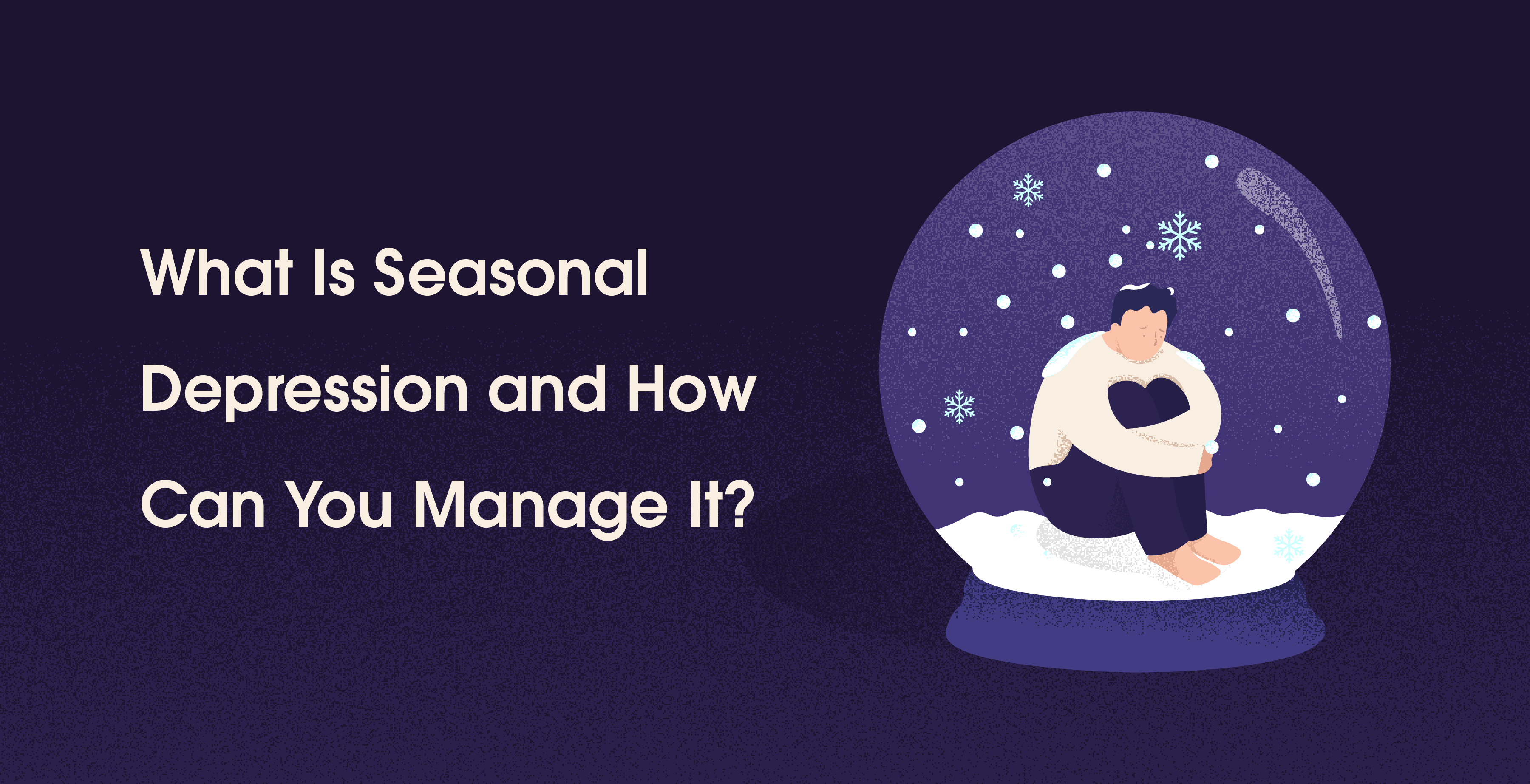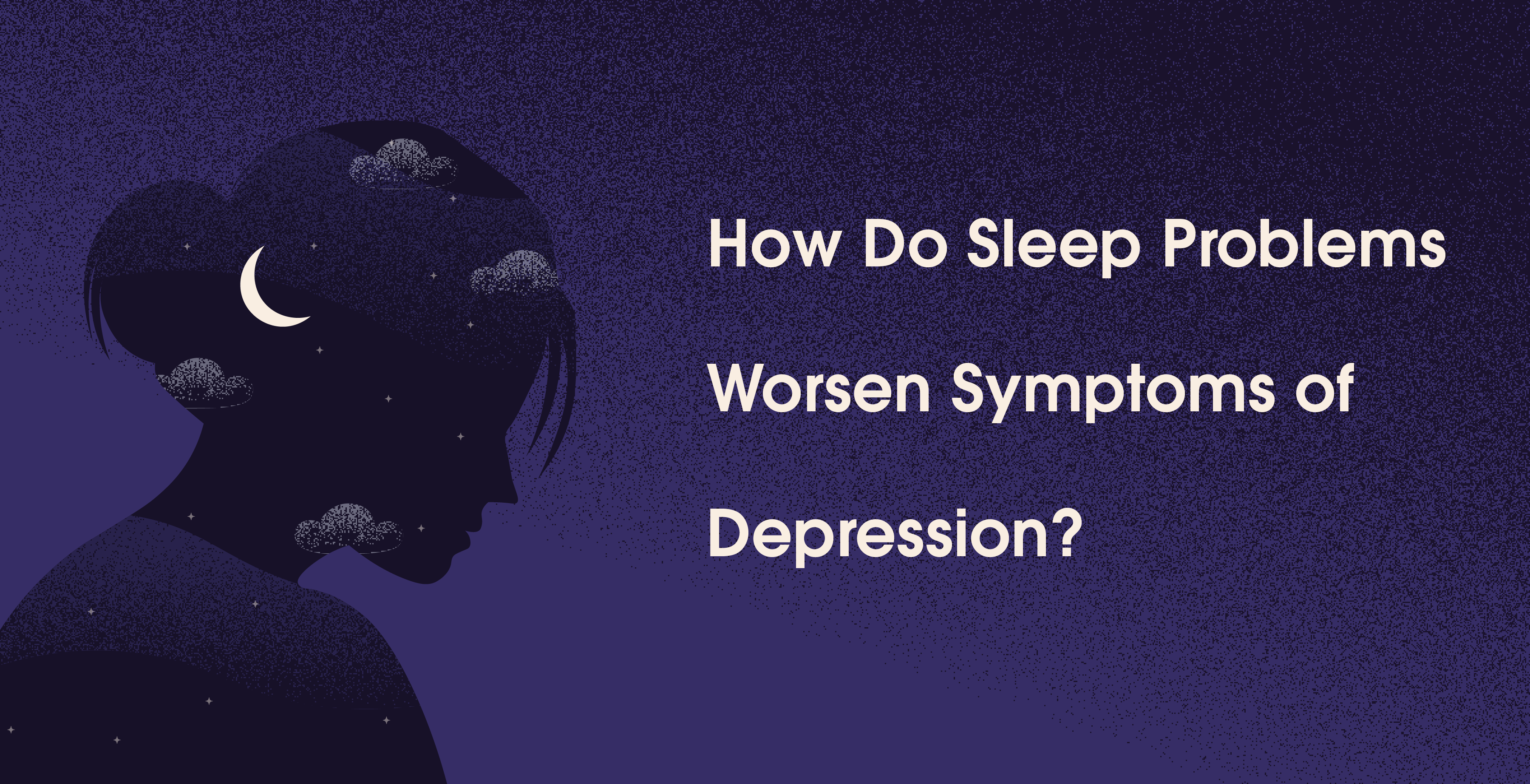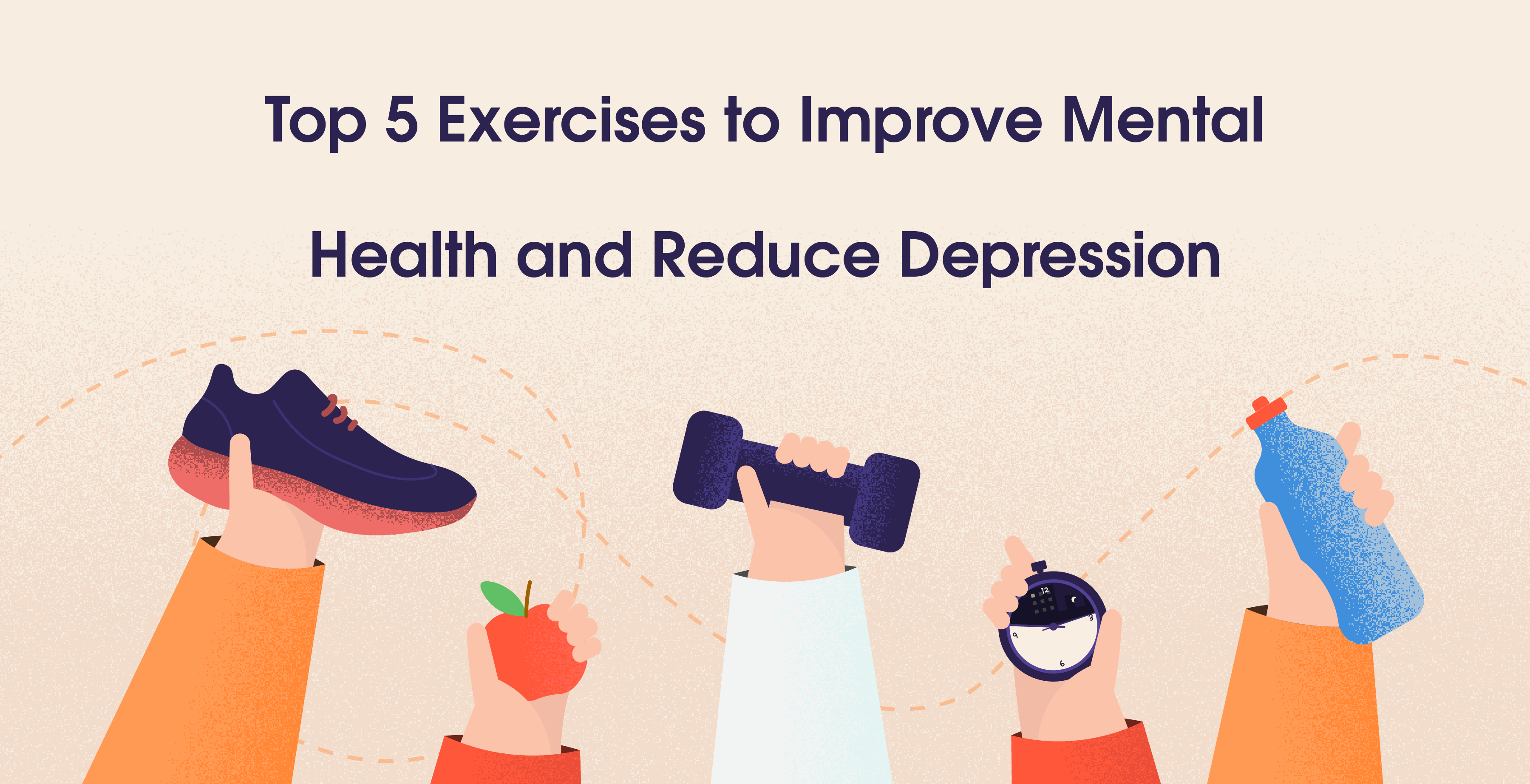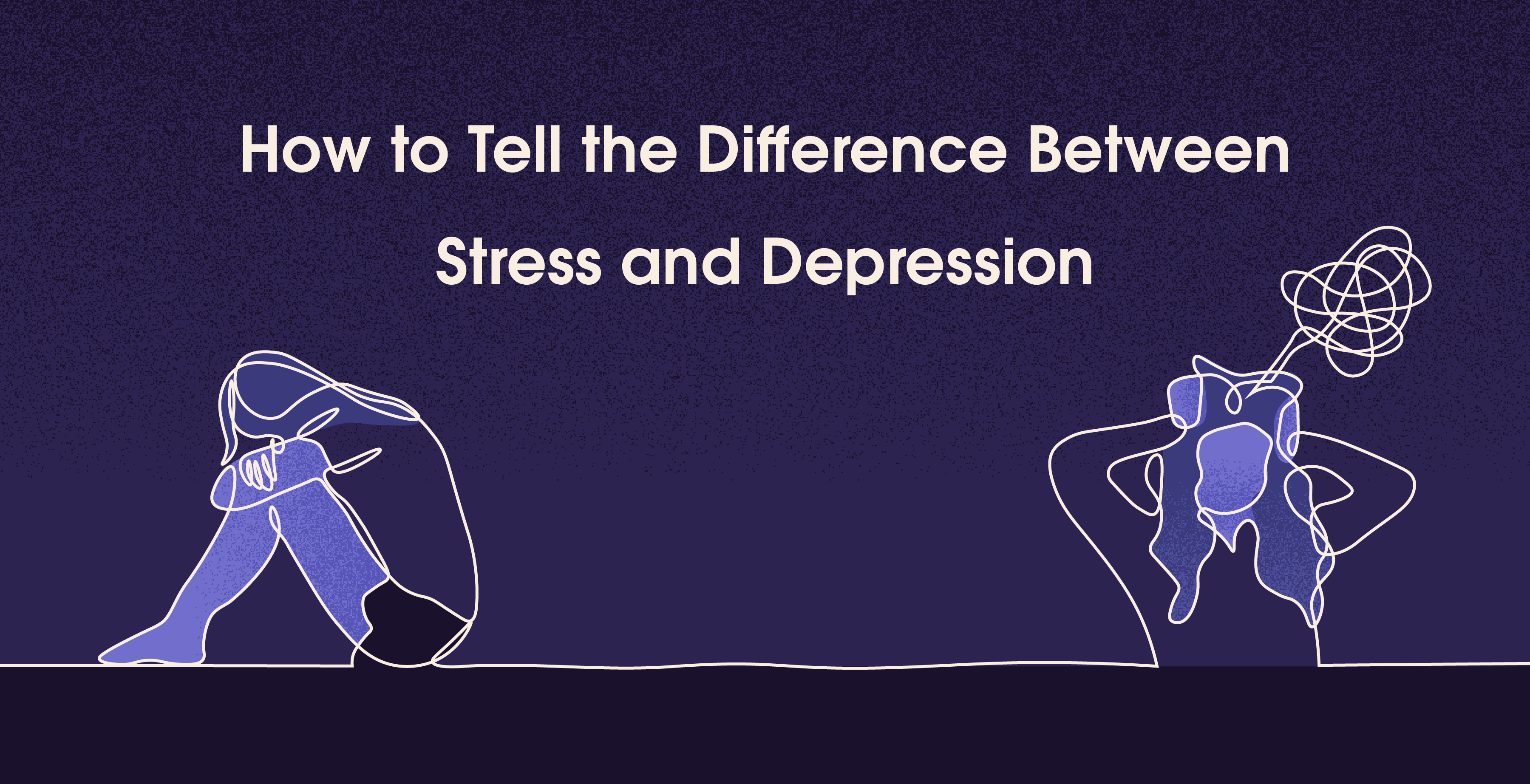What Is Seasonal Depression and How Can You Manage It?
Jan 24, 2025
Sayfali Rawlani



Table Of Contents
The days get shorter, the nights grow colder, and suddenly, it feels like your energy and motivation are buried under layers of frost. Sound familiar? Seasonal depression, or Seasonal Affective Disorder (SAD), can sneak up on you just as winter arrives, leaving you feeling unmotivated, tired, or downright blue. It's more than just the "winter blues" people talk about—it’s a real mood disorder that can disrupt your daily life. But what exactly is it, and more importantly, how can you find your way out of this seasonal slump?
Understanding Seasonal Depression
Seasonal depression is a type of depression linked to changes in seasons. While it typically shows up during the late fall or early winter and fades away as spring rolls in, it’s not exclusive to cold weather. Some people experience SAD during the summer months as well, though that’s less common. It’s like your internal thermostat doesn’t just regulate your body temperature—it’s also tied to your mood.
Ever notice how sunlight feels almost magical? There’s a good reason for that. Less sunlight during winter can disrupt your body’s circadian rhythm, leading to changes in sleep patterns and energy levels. Add to that a drop in serotonin, the “feel-good” chemical in your brain, and a sprinkle of increased melatonin, which makes you feel sleepy, and you’ve got the perfect storm for SAD. It’s your body reacting to its environment, even if you’re not consciously aware of it.
What It Feels Like
For those who experience seasonal depression, it’s not just about feeling a little gloomy on a gray day. It’s heavier than that—almost like an invisible weight pressing down on you. You might find it harder to get out of bed, your favorite hobbies might lose their spark, and even the smallest tasks feel insurmountable. Cravings for comfort foods—hello, carbs!—and feelings of isolation are common. It’s as though winter steals not just the warmth but the joy from your everyday life.
Steps to Manage Seasonal Depression
But here’s the thing: you’re not powerless. Managing SAD is entirely possible, and it starts with understanding your unique needs. Let’s dive into a few strategies that can help you navigate the darker months.
Chase the Sun
When the sun makes a rare winter appearance, don’t ignore it—soak it up! Even just 20 minutes of sunlight can help regulate your mood. Sit by a window, bundle up and go for a walk, or rearrange your workspace to let in natural light. Can’t find the sun? That’s where light therapy boxes come in. These devices mimic natural sunlight, giving your brain the boost it craves when the skies are endlessly overcast.
Move Your Body, Even When It Feels Impossible
We know—it’s hard to muster up the energy to exercise when you’re already feeling low. But trust us, movement is magic. A quick 10-minute stretch, a yoga session, or even dancing around your living room can release endorphins and make you feel a little lighter. You don’t need to train for a marathon. Just move in ways that feel good for you.
Stay Connected
Winter has this sneaky way of making you want to curl up in a blanket and disconnect from the world. While a little alone time is healthy, too much can deepen feelings of isolation. Call a friend, join a book club, or even schedule regular family dinners. Sometimes, just knowing someone else understands can be the warmest comfort.
Fuel Your Body (and Mind)
When the cravings for sugary snacks and heavy comfort foods strike, pause for a moment. Sure, indulging every now and then is fine, but try to balance it out with foods that nourish your body. Think whole grains, nuts, fruits, and veggies. They’re not just good for your physical health—they can work wonders for your mood too.
Seek Professional Help
If the weight of seasonal depression becomes too much to bear, reaching out to a therapist or counselor can make all the difference. Sometimes, just talking about how you feel is a form of healing. Therapists can also help you develop coping mechanisms tailored to your situation. And if needed, they can explore treatments like antidepressants or other therapies to help you find relief.
Finding Your Light Again
There’s no denying that winter can be challenging, but it’s also a reminder of resilience. Just as the trees shed their leaves and wait patiently for spring, you too can weather the season. Some days, you might feel like you’re trudging through knee-deep snow, but each step forward matters. And when you finally catch a glimpse of sunshine breaking through the clouds, you’ll know you’ve made it through.
Seasonal depression doesn’t define you—it’s just a chapter in your story. By taking small, intentional steps, you can reclaim your light, even in the darkest months. So the next time winter’s chill feels overwhelming, remind yourself: that spring is always just around the corner.
The days get shorter, the nights grow colder, and suddenly, it feels like your energy and motivation are buried under layers of frost. Sound familiar? Seasonal depression, or Seasonal Affective Disorder (SAD), can sneak up on you just as winter arrives, leaving you feeling unmotivated, tired, or downright blue. It's more than just the "winter blues" people talk about—it’s a real mood disorder that can disrupt your daily life. But what exactly is it, and more importantly, how can you find your way out of this seasonal slump?
Understanding Seasonal Depression
Seasonal depression is a type of depression linked to changes in seasons. While it typically shows up during the late fall or early winter and fades away as spring rolls in, it’s not exclusive to cold weather. Some people experience SAD during the summer months as well, though that’s less common. It’s like your internal thermostat doesn’t just regulate your body temperature—it’s also tied to your mood.
Ever notice how sunlight feels almost magical? There’s a good reason for that. Less sunlight during winter can disrupt your body’s circadian rhythm, leading to changes in sleep patterns and energy levels. Add to that a drop in serotonin, the “feel-good” chemical in your brain, and a sprinkle of increased melatonin, which makes you feel sleepy, and you’ve got the perfect storm for SAD. It’s your body reacting to its environment, even if you’re not consciously aware of it.
What It Feels Like
For those who experience seasonal depression, it’s not just about feeling a little gloomy on a gray day. It’s heavier than that—almost like an invisible weight pressing down on you. You might find it harder to get out of bed, your favorite hobbies might lose their spark, and even the smallest tasks feel insurmountable. Cravings for comfort foods—hello, carbs!—and feelings of isolation are common. It’s as though winter steals not just the warmth but the joy from your everyday life.
Steps to Manage Seasonal Depression
But here’s the thing: you’re not powerless. Managing SAD is entirely possible, and it starts with understanding your unique needs. Let’s dive into a few strategies that can help you navigate the darker months.
Chase the Sun
When the sun makes a rare winter appearance, don’t ignore it—soak it up! Even just 20 minutes of sunlight can help regulate your mood. Sit by a window, bundle up and go for a walk, or rearrange your workspace to let in natural light. Can’t find the sun? That’s where light therapy boxes come in. These devices mimic natural sunlight, giving your brain the boost it craves when the skies are endlessly overcast.
Move Your Body, Even When It Feels Impossible
We know—it’s hard to muster up the energy to exercise when you’re already feeling low. But trust us, movement is magic. A quick 10-minute stretch, a yoga session, or even dancing around your living room can release endorphins and make you feel a little lighter. You don’t need to train for a marathon. Just move in ways that feel good for you.
Stay Connected
Winter has this sneaky way of making you want to curl up in a blanket and disconnect from the world. While a little alone time is healthy, too much can deepen feelings of isolation. Call a friend, join a book club, or even schedule regular family dinners. Sometimes, just knowing someone else understands can be the warmest comfort.
Fuel Your Body (and Mind)
When the cravings for sugary snacks and heavy comfort foods strike, pause for a moment. Sure, indulging every now and then is fine, but try to balance it out with foods that nourish your body. Think whole grains, nuts, fruits, and veggies. They’re not just good for your physical health—they can work wonders for your mood too.
Seek Professional Help
If the weight of seasonal depression becomes too much to bear, reaching out to a therapist or counselor can make all the difference. Sometimes, just talking about how you feel is a form of healing. Therapists can also help you develop coping mechanisms tailored to your situation. And if needed, they can explore treatments like antidepressants or other therapies to help you find relief.
Finding Your Light Again
There’s no denying that winter can be challenging, but it’s also a reminder of resilience. Just as the trees shed their leaves and wait patiently for spring, you too can weather the season. Some days, you might feel like you’re trudging through knee-deep snow, but each step forward matters. And when you finally catch a glimpse of sunshine breaking through the clouds, you’ll know you’ve made it through.
Seasonal depression doesn’t define you—it’s just a chapter in your story. By taking small, intentional steps, you can reclaim your light, even in the darkest months. So the next time winter’s chill feels overwhelming, remind yourself: that spring is always just around the corner.
Table Of Contents
Table Of Contents
Table Of Contents
Read More


Mar 28, 2025
Sayfali Rawlani


Feb 6, 2025
Sayfali Rawlani


Jan 28, 2025
Sayfali Rawlani



Company
Copyright © 2025 trst health. All right reserved.

